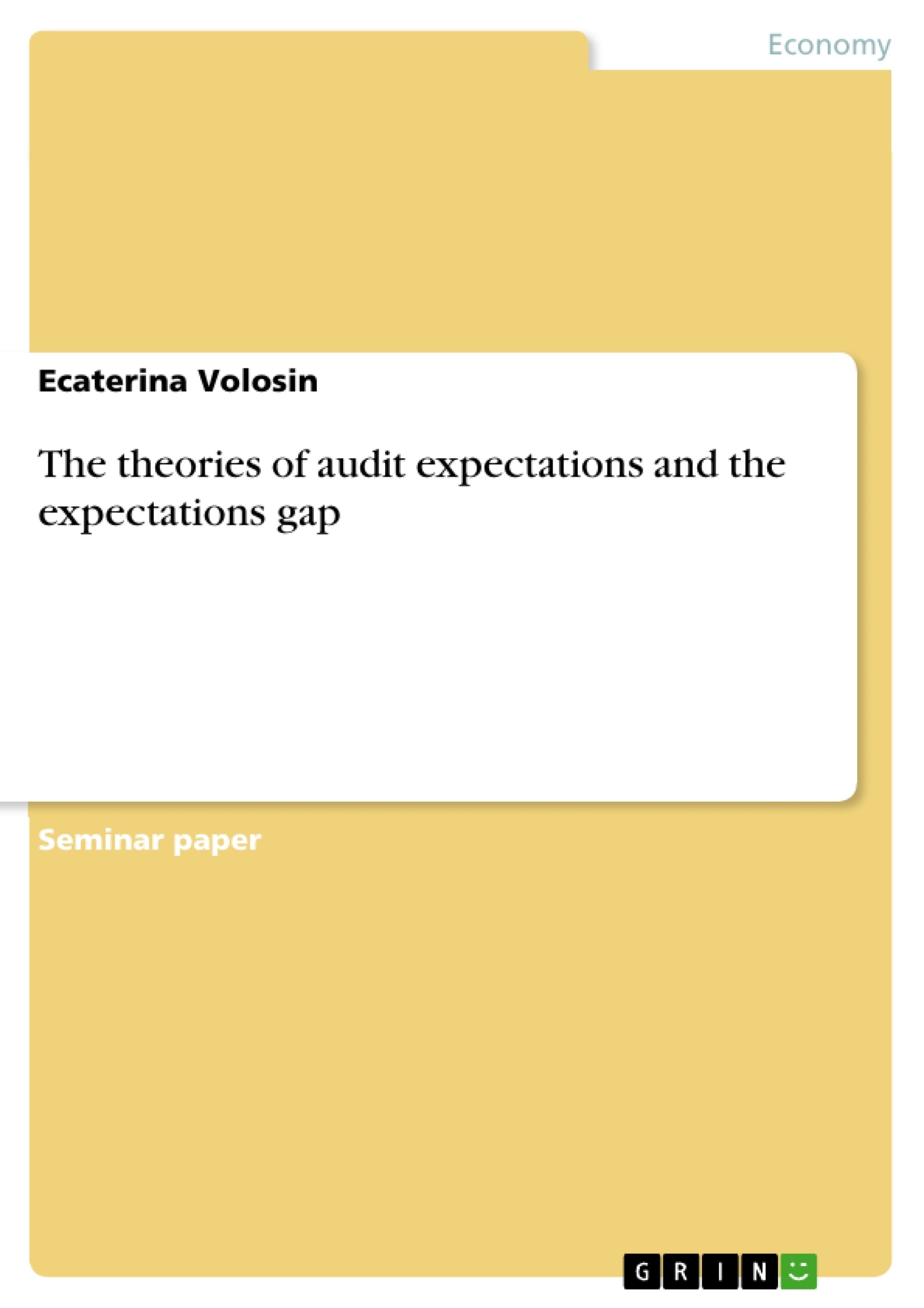This essay deals with the demand for audit functions and the resulting expectations in auditors’ work. The credibility of mandated disclosure of financial statements is the central issue for regulatory bodies attempting to protect the public interest. This requirement gives rise to a demand for auditing services. Since the beginning of the audit profession theories were made in order to specify and determine the audit functions. The ‘agency-theory’ is associated with the conflicting interests of shareholders and management of a company, suggesting that the less-informed party (shareholders) will have a demand for information that monitors the behaviour of the better-informed manager. Thus, audits of financial reports would be one form of such information, providing the shareholders with independent assurance about the ongoing developments. The ‘lending credibility theory’ is similar to the agency-theory and states that audited financial statements can enhance stakeholders’ faith in management’s stewardship. Another theory is the ‘theory of inspired confidence’, whereby stakeholders demand accountability from the management as an exchange for their contribution to the company. The last discussed theory is the ‘policeman theory’ which narrows auditor’s responsibilities to prevention and detection of fraud. All these theories describe the expectations the stakeholders have of the auditors, including protection against fraud, warning of future insolvency, general reassurance of financial well-being, safeguards for auditor independence and understanding of audit reports. Although these expectations seem to be rather natural, however, an audit expectations gap does exist based mostly on the diversity of views about the audit function. The gap exists between what the public expects the auditor to do and what the auditor can and should do. Several suggestions were made to narrow the expectations gap, as well as providing statutes in order to describe audit functions especially concerning the responsibility to detect and report errors and fraud.
Table of Contents
- Executive Summary
- Introduction
- The Demand for Auditing
- The Industrial Revolution and the Need for Auditors
- The Role of the Auditor in Communication of Accounting Information
- The UK Companies Act 1985 and Audit Requirements
- The Purpose and Nature of Audit
- The Stakeholders in Financial Reporting
- Hypotheses Explaining the Demand for Auditing
- Stewardship Hypothesis and Agency Theory
- Lending Credibility Theory
- Information Hypothesis
Objectives and Key Themes
This essay examines the demand for audit functions and the expectations placed on auditors. It explores the theories explaining the demand for audits, specifically focusing on the conflicting interests of stakeholders and the resulting expectations gap.
- Theories of audit expectations, including the agency theory, lending credibility theory, theory of inspired confidence, and the policeman theory.
- The audit expectations gap, which arises from the differing expectations of the public and the auditor's capabilities.
- The historical development and purpose of the audit function.
- The role of the auditor in providing assurance and enhancing the credibility of financial statements.
- The challenges of meeting conflicting stakeholder expectations in the audit process.
Chapter Summaries
The first chapter explores the historical origins of the audit function, tracing it back to the Industrial Revolution and the need for specialized bookkeeping and auditing in large companies. It emphasizes the role of the auditor as an independent third party responsible for verifying financial information and ensuring transparency. The chapter also discusses the various stakeholders in financial reporting, including shareholders, creditors, employees, and the government.
The second chapter delves into the theories that explain the demand for auditing. It examines the agency theory, which focuses on the conflicting interests between management and shareholders, and the lending credibility theory, which highlights the need for assurance and credibility in financial statements. The chapter also explores the information hypothesis, which emphasizes the role of the auditor in providing reliable and credible financial data.
Keywords
The key concepts and themes explored in this essay include audit expectations, audit expectations gap, stakeholder interests, agency theory, lending credibility theory, information hypothesis, financial reporting, and the role of the auditor in providing assurance and credibility.
- Citation du texte
- Ecaterina Volosin (Auteur), 2007, The theories of audit expectations and the expectations gap, Munich, GRIN Verlag, https://www.grin.com/document/116911



